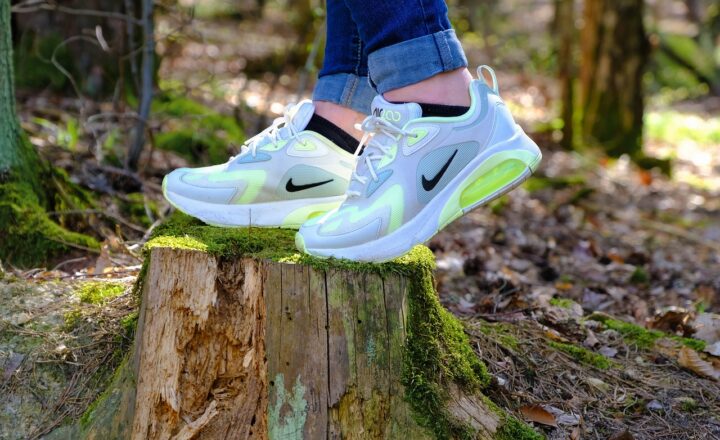How the Mood Ring Became a Strange Device Obsessed With Your Emotions
November 15, 2024

The mood ring, often regarded as a quirky accessory, became a cultural phenomenon in the 1970s, captivating the hearts and minds of a generation. Its vibrant color changes, promising to reflect the wearer’s emotions based on variations in body temperature, sparked both fascination and skepticism.
1. The Origins of the Mood Ring
To understand the allure of mood rings, we must travel back to their inception. Created in 1975 by jewelry designer Maris Ambats and his partner Josh Reynolds, mood rings feature a thermochromic element that changes color according to body heat. The rings were initially marketed as symbols of emotional expression, tapping into the growing interest in self-awareness and holistic practices prevalent in the ’70s.
The concept was simple yet captivating: wear the ring, and it will reveal your emotional state through color. If the ring was blue, it indicated calmness; if green, it represented relaxation; yellow or amber suggested anxiety, while black often meant tension or stress. This simplistic interpretation of emotions appealed to many who were curious about the inner workings of their feelings.
2. The Science Behind Mood Rings
Despite their popularity, the scientific grounding of mood rings can be debated. The rings work on the principle of thermochromism—substances that change color in response to temperature variations.
When a person experiences different emotional states, their body temperature can fluctuate due to changes in blood flow and adrenaline levels, among other factors. The theory behind the mood ring suggests that these changes in body temperature correlate with certain emotional responses. However, the accuracy of color interpretation remains questionable since emotional states are complex and cannot be precisely measured by temperature alone.
Some might argue that the colors associated with emotions were somewhat arbitrary. While marketing efforts assured consumers that the colors aligned directly with specific feelings, translations varied from one interpretation to another. For example, manufacturers provided extensive color charts with ambiguous descriptions that often led to misunderstandings.
3. Cultural Impact and Revival
The mood ring burst into mainstream culture in the late 1970s and quickly became a staple of pop culture. They adorned the fingers of everyone from celebrities to everyday teenagers, appearing in music videos, television shows, and magazines. This surge in popularity was coupled with a growing interest in New Age philosophies surrounding emotions, self-expression, and spirituality.
However, by the early 1980s, mood rings had lost their initial appeal as consumer interest waned. The novelty factor diminished, leading to the widespread perception of mood rings as trinkets rather than genuine emotional indicators. Despite this decline, the spirit of the mood ring had not completely faded.
In the early 2000s, the mood ring experienced a resurgence fueled by nostalgia and a newfound interest in vintage fashion. Artists and designers began incorporating mood rings into collections, and modernized versions were marketed targeting millennials and Gen Z consumers. This revival proved that despite a lack of scientific backing, the emotional connection people have with mood rings remained strong.
4. The Psychology of Emotion and Self-Expression
While mood rings may not accurately measure emotions, they do tap into a deeper psychological aspect regarding self-expression. Emotions can often be complex and difficult to articulate, especially in our fast-paced modern world. A mood ring offers a tangible way to ‘express’ those feelings, even if the method itself is flawed.
In a society increasingly understanding the significance of emotional health, mood rings serve as a conversation starter. They reflect a desire for emotional literacy, allowing individuals to discuss their feelings openly. Whether it’s wearing a mood ring at a gathering or presenting it as a gift, these rings can ignite dialogue around emotional well-being.
Additionally, the act of wearing a mood ring can serve as a personal reminder to check in with oneself emotionally. The color changes act as a visual cue, encouraging individuals to take a pause and reflect on their emotional states throughout the day.
5. Today’s Interpretation and Use
In contemporary culture, mood rings are often viewed as fun, nostalgic jewelry rather than tools for emotional insight. They remain popular among those who appreciate their aesthetic and the whimsy they bring to personal style. Some modern iterations even feature smart technology, blending the vintage charm of the original mood ring with today’s tech-savvy world.
Today’s versions may incorporate LED color displays or connect with mobile applications that analyze stress and emotional levels. These advancements signify a marriage of historical concepts with modern technology—offering users a more substantial claim to emotional understanding combined with the aesthetic appeal mood rings always had.
As millennials and Gen Z consumers gravitate towards handmade and unique jewelry, the desire for personalized emotional expression continues to thrive. The evolution of mood rings now matches contemporary conversations surrounding mental health and well-being.
6. Conclusion: A Symbol of Emotional Exploration
The mood ring embodies a cultural fascination with the interplay of emotions, self-awareness, and personal expression—from its quirky origins to its modern adaptations. While it may not provide empirical emotional insights, it serves as a fun accessory that sparks curiosity about emotions and connections.
Whether you view it as a mere piece of jewelry or a symbol of deeper emotional exploration, the mood ring undeniably holds a place in pop culture history. Its enduring legacy is a testament to society’s increasing acceptance and understanding of emotions—a legacy that will likely continue to evolve, much like the rings themselves.







